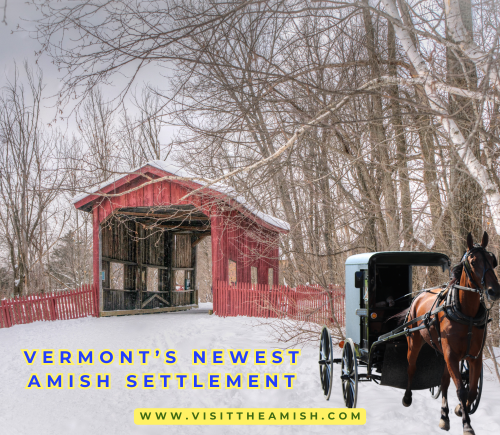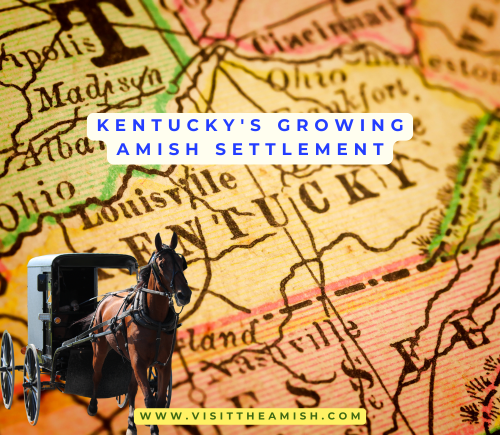New Amish Community in Vermont Brings Tradition, Craftsmanship, and Community to the Northeast Kingdom
In the quiet, rural landscapes of Vermont’s Northeast Kingdom, a new Amish community has taken root near the town of Brownington. Since their arrival in 2015, Amish families from Pennsylvania have steadily moved into this picturesque region, drawn by the availability of affordable farmland and the promise of a peaceful, rural lifestyle. Today, this growing settlement has become a hub of traditional craftsmanship and sustainable farming, enriching the local economy and culture while offering Vermonters a glimpse into the simplicity and hard work that define Amish life.
The Amish in Brownington have already established several thriving businesses that are drawing attention from locals and tourists alike. One standout is Miller’s Baked Goods, located on Schoolhouse Road. Open only on Saturdays from spring through October, this bakery has become a favorite destination for its fresh donuts, pies, cookies, and jams. “We use recipes passed down through generations,” said Lovina Miller, one of the bakers. “Everything is made by hand with simple ingredients, and I think people appreciate that.” Customers rave about the quality of the baked goods, with one visitor describing them as “the best donuts I’ve ever had.”

Another notable business is Barkman Furniture, which offers handcrafted hardwood furniture made by skilled Amish craftsmen. While Barkman Furniture is based in Ohio, its refined pieces are available through select dealers in Vermont. The furniture blends traditional techniques with modern elegance, creating heirloom-quality items for bedrooms, dining rooms, and offices. “Amish craftsmanship is all about attention to detail and durability,” said Samuel Barkman, a representative for the company. “Each piece is built to last for generations.”
A Growing Community of Farmers and Craftsmen
In addition to these businesses, the Amish community has brought sustainable farming practices to Brownington. Families operate produce stands like Meadowview Farm, where locals can purchase fresh fruits and vegetables grown without synthetic fertilizers or pesticides. Seasonal offerings such as sweet corn in summer and pumpkins in fall have made these stands a staple for those seeking farm-to-table produce.
The Amish are also known for their carpentry skills, which have been put to use on local construction projects. From barns to homes, Amish carpenters have impressed neighbors with their precision and efficiency. “They built my barn in just a few weeks,” said local resident Tom Johnson. “The quality of their work is incredible.”
Community events have further strengthened ties between the Amish and their neighbors. Each year, the Amish host a fish fry fundraiser to help cover medical expenses within their community. Hundreds of Vermonters attend this event, enjoying delicious food while supporting a good cause. Jane Greenwood, a longtime Brownington resident, shared her thoughts: “The Amish have been wonderful neighbors. They’re hardworking, kind, and always willing to lend a hand.”

A Welcome Addition to Vermont
The arrival of the Amish has brought new life to an area where small-scale farming had been declining for years. Many locals see their presence as a positive force for preserving Vermont’s agricultural heritage. “The younger generation wasn’t interested in continuing the hard work of farming,” said Greenwood. “The Amish have stepped in and shown that farming can still be viable if you’re willing to put in the effort.”
Road safety has been one challenge associated with integrating horse-and-buggy traffic into modern transportation systems. To address this issue, yellow road signs warning drivers about slow-moving buggies have been installed throughout Brownington’s dirt roads. Despite these minor adjustments, most residents agree that the benefits far outweigh any inconveniences.
Dr. Emily Roberts, an expert on rural communities at the University of Vermont, highlighted why Vermont appeals to the Amish: “Vermont offers everything they’re looking for—affordable farmland, low population density, and a culture that values independence and sustainability.” She added that Vermont’s reputation for tolerance has likely played a role in making the state an attractive destination for Amish families looking to relocate from more crowded areas like Pennsylvania or Ohio.
Looking Ahead
As this new community continues to grow—now numbering roughly 30 families—there’s excitement about what lies ahead. Plans are underway to expand local businesses and potentially open additional shops featuring handmade quilts, candles, and other traditional goods crafted by Amish women during the winter months when farming slows down.
For now, Brownington’s Amish community stands as a testament to how tradition can thrive in modern times while enriching local economies and fostering cross-cultural understanding. As Lovina Miller puts it: “We came here to live simply and peacefully on the land—and we’re grateful for how welcoming everyone has been.”

Citations:
[1] https://amishamerica.com/vermont-amish-doing-well-3-years-later/
[2] https://www.barkmanfurniture.com/vermont/
[3] https://www.reddit.com/r/vermont/comments/4x311k/whats_up_with_the_amish_in_the_northeast_kingdom/
[4] https://www.amish365.com/staying-at-an-amish-farm/
[5] https://www.barkmanfurniture.com/ludlow-vermont/
[6] https://amishamerica.com/amish-moving-to-vermont/
[7] https://www.yelp.com/search?find_desc=Amish&find_loc=Bennington%2C+VT+05201
[8] https://www.vnews.com/Amish-families-quietly-take-up-residence-in-the-Northeast-Kingdom-21006115
[9] https://www.vermontpublic.org/podcast/brave-little-state/2021-10-21/six-years-ago-amish-families-started-settling-in-vermont-how-are-they-doing
















